Developing metacognition in your school
Exam Wrappers
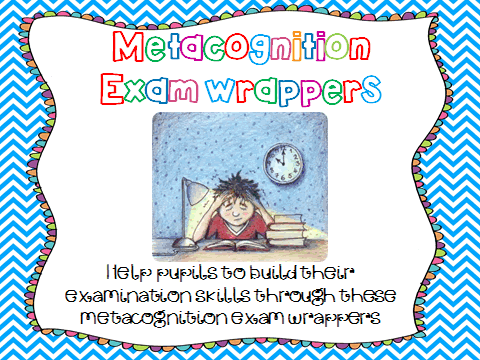
How good are your pupils at the following:
I am sure that, like many teachers, you wished students were better at some, or all, of the above.
Exam wrappers are a technique designed to do just that. A wrapper is an activity that surrounds a pre-existing learning or assessment task and fosters students' metacognition. There are thousands of variables that go into creating examination success. Wrappers help pupils to consider these variables and make changes to their approach in order to increase performance.
It starts with explicit teaching. For example, taking the revision element, the teacher may share with pupils a new revision strategy for learning key terms and definitions. Pupils then use this method to revise for a short class test. After the test, with the aid of the teacher, they reflect on the effectiveness of the technique they used. They consider if they will use this strategy again, if they need to adapt the strategy, if anything got in the way of the strategy being effective and how they can improve next time. They refine and use the strategy again for the next class test on terms and definitions. They consider if their performance has improved and keep repeating this process - extending their knowledge of different revision strategies, trying them out, and evaluating the effectiveness of the strategies. The explicit teaching at the start and the analytical reflection at the end, are the 'wrapper'. Pupils keep repeating this process, and over time start to build up a greater understanding of what effective preparation for examination looks like, being able to adapt their own practices to get closer to the ideal performance.
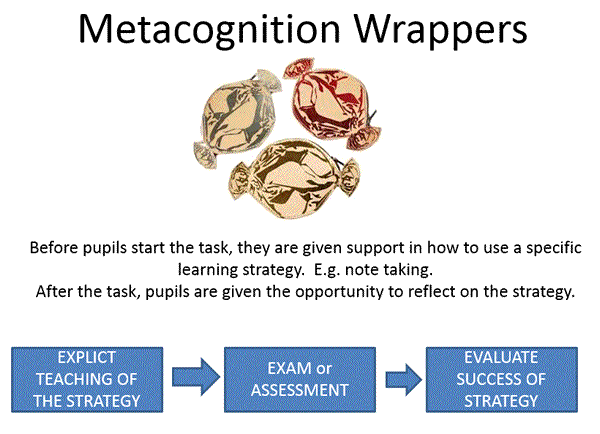
Exam wrappers are a series of questions and activities to support students in thinking about their approach to examinations and how to move forward after the exam has concluded. We can break exam wrappers into 5 key areas (illustrated below). It is an approach which needs to be used flexibly and practiced regularly. Students should start this in KS3 and build up their expertise over time. Teachers and students should focus on one element at a time, rather than trying to address issues across all five areas. E.g. a teacher may select to focus on formulating strategies to apply during the physics examination and help pupils consider what they do from the minute they open the paper to the time they close the paper. What do they do when faced with difficulties? What would the teacher advise when facing a question they can remember little about? What would the teacher advise to do before answering particular questions?
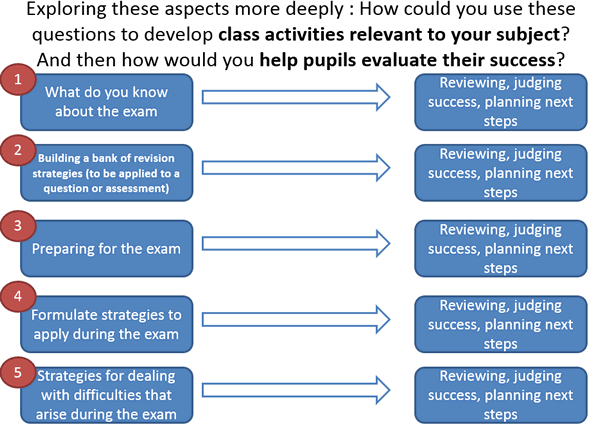
It is important that exam wrappers are not just 'bolt on' extras provided during form time. They must be used in conjunction with a real tests / practice tests and be delivered within a subject specific context. It is vital that they are led by the subject teachers. Senior leaders may want to collect information across subjects about what they think their likely focus areas will be, although it is also important to recognise that teachers should use wrappers to respond to the needs of their class as they arise, and therefore it might be difficult to say with certainty the exact nature of the wrapper.
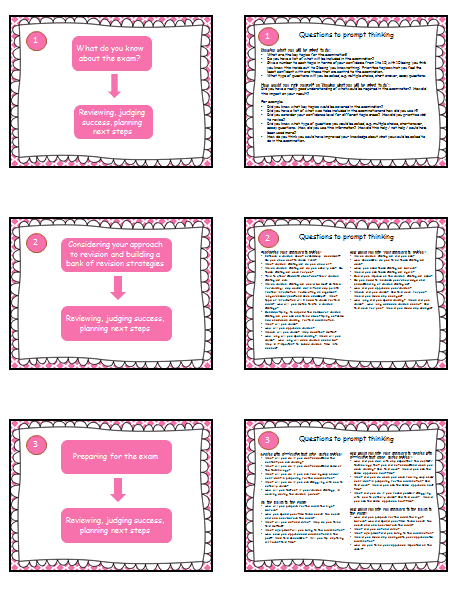
Click to download questions to support exam wrappers
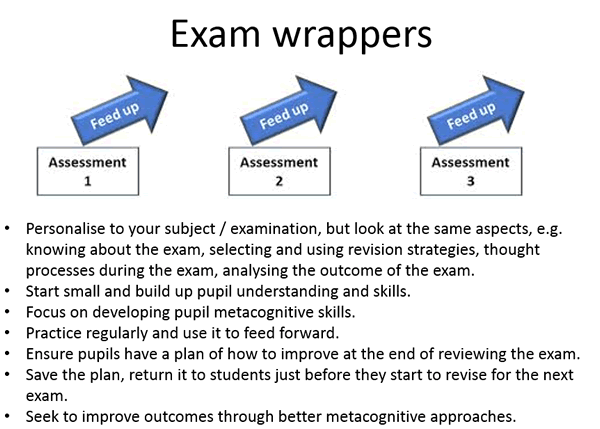
Why Wrappers Work
* Time efficient
* Students are doing the task anyway
* Wrapper only adds a few minutes of time to a task
* Metacognition practice is integrated with the task
* Students are self-monitoring in the context where it is needed
* Feedback on accuracy can be built in and immediate
* Wrapper support can be gradually faded
* Other research shows even minor interventions that frame a task in a new way can significantly change behavior
Wrappers
![]() Wrappers can be used around any teaching which requires strategies. For example:
Wrappers can be used around any teaching which requires strategies. For example:
- Homework wrappers.
- Note taking wrappers.
- Listening to lectures wrappers.
Lecture Wrappers
How they work:
* Before lecture, present tips on active listening
* After lecture, students get index cards on which to write 3 key ideas from lecture
* Teacher gives his list of 3 key ideas for students to self-check. Teacher asks students to evaluate their 'active listening' and plan for how to make improvements for the next lecture.
Homework Wrappers
How they work:
* Before the homework, the teacher asks teachers to pre-assess the homework. E.g. "This homework is about vector arithmetic… How quickly and easily can you solve problems that involve vector subtraction?", "What will be the trickiest elements of the homework?"
* After the homework the teacher directs students to self-assess: "Now that you have completed this homework, how quickly and easily can you solve problems…?", "What was the trickiest element", "What helped you?"
Note taking wrappers
* Before the note taking, the teacher explicitly teachers a method (or element) of note taking.
*Pupils then make their notes.
*After they compare and contrast notes with each other, they evaluate the method, they adjust the method as need be, and then repeat this process.
Like to share
Please send us your resources.